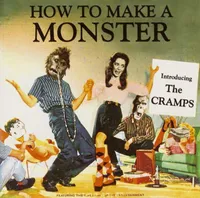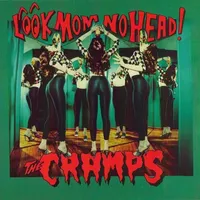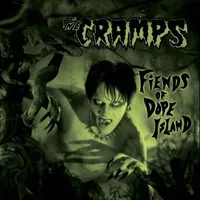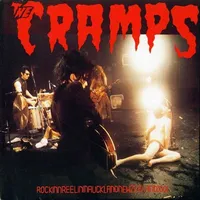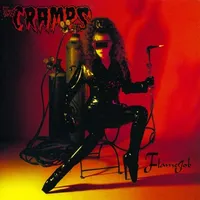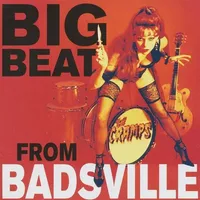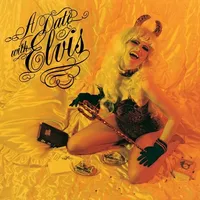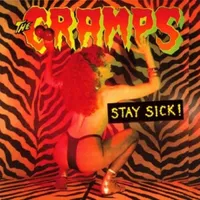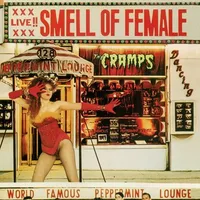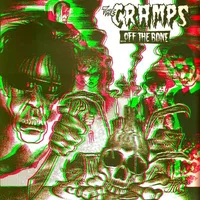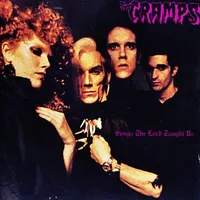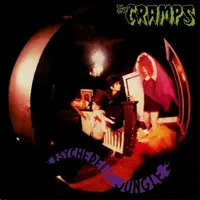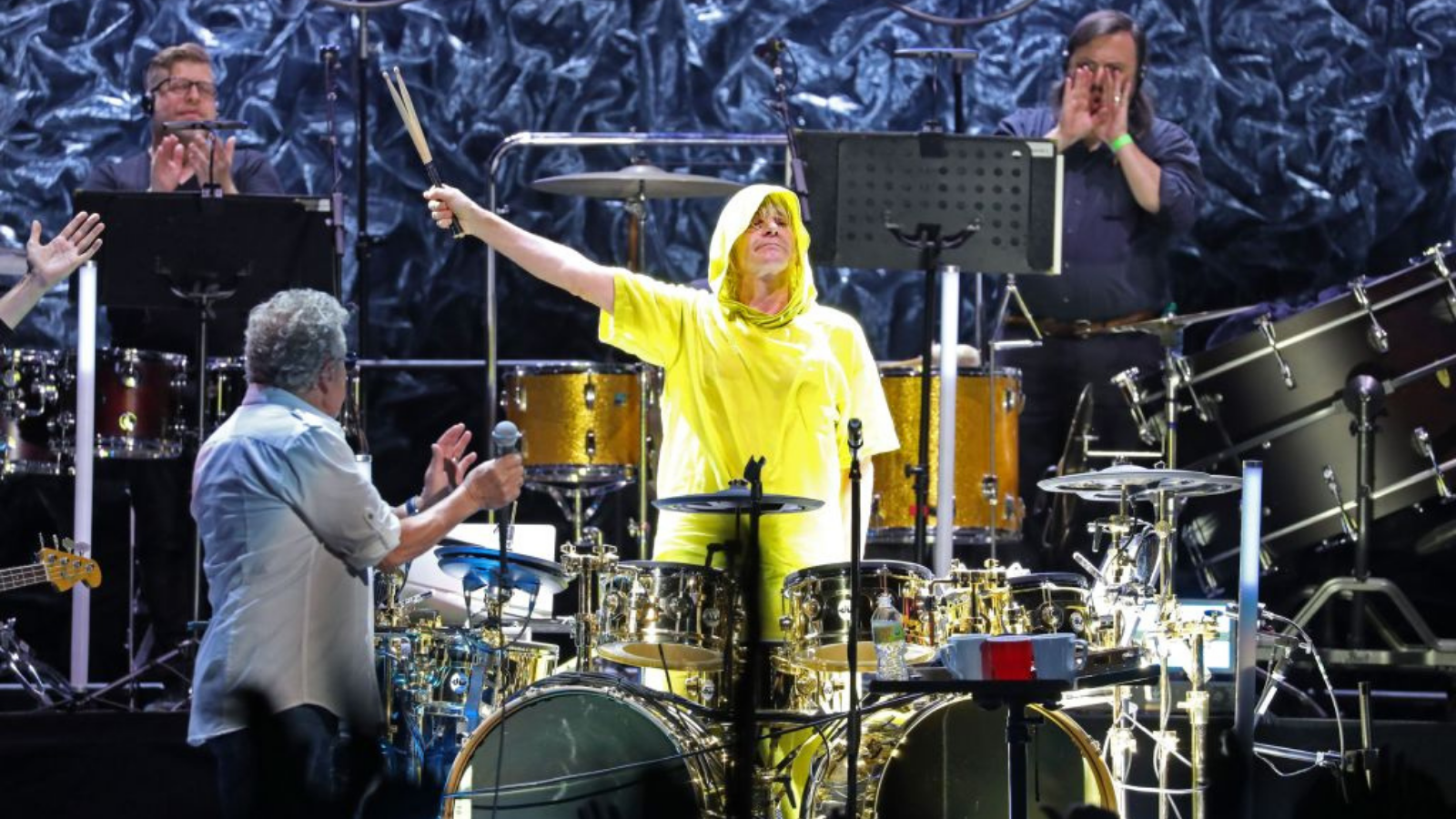Number one in a field of one: Every album by The Cramps ranked, from worst to best
Celebrating the finest in American trash and kitsch culture, The Cramps played rock'n'roll at its delinquent, b-movie best
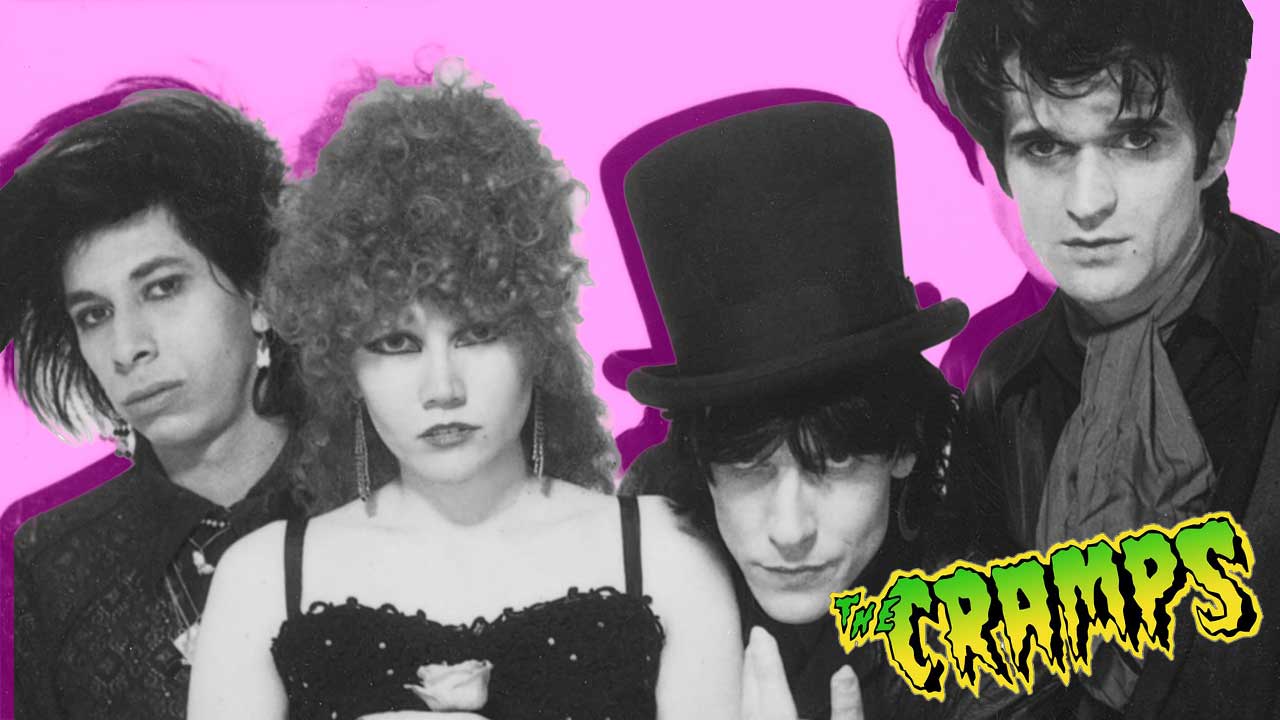
Right from their formation in 1976, The Cramps were a living, breathing organism dedicated to evangelising rock’n’roll at its most primal, celebrating colourful sexual practices and altered states of minds, and devouring horror movies, sci-fi films, TV, comic books and the very finest in American trash and kitsch culture. Crucially, they were no mere revivalists; The Cramps were fundamentalists and the gang that the most unruly of delinquents wanted to join.
Led by singer Lux Interior and guitarist Poison Ivy Rorschach, the pair met in 1972 when the former picked up the latter as a hitchhiker in Sacramento, California, fell in love and remained married until Interior’s untimely passing in 2009 at the age of 62. In between those two points, the pair – along with a supporting cast of ever-changing members, which included ghoulish guitarist Bryan Gregory and later Kid Congo Powers, and drummer Nick Knox among many others – created one of the most breathlessly exciting bands to have emerged from CBGB's primordial swamp in New York.
Initially eschewing the bass guitar in favour of a fuzz-heavy dual guitar attack and committing themselves to the feral and minimal delivery of their 50s and 60s forebears, The Cramps inadvertently invented psychobilly, though none of their disciples ever matched their zeal. Vitally, their covers of rock’n’roll and garage curios had less to do with a lack of ideas and more with an archaeological approach to what had come before them – they were the teachers to listen to. Even when they did finally succumb to the low end, they remained number one in a field of one. And though their recorded quality control dipped from time to time, The Cramps remained one the most dependably thrilling live bands to hit the boards right until the end.
Plenty of bands talk the talk but very few can actually walk the walk. And that The Cramps took those strides in the highest of heels and shiniest of boots simply makes them so much more alluring.

12. How To Make A Monster (Vengeance, 2004)
Though hardly the worst in the conventional sense, this compilation of The Cramps’ earliest demos and rehearsals, live performances at Max’s Kansas City and CBGBs in 1977 and 1978 respectively and 80s works-in-progress is very much aimed at the devotee rather than the casual observer.
Among the gems found here are a studio version of Call Of The Wighat with The Gun Club’s Terry Graham on drums, the core of Journey To The Centre Of A Girl and a drug deal being made in the crowd during the Max’s show. A hardcore collection in more ways than one.
11. Look Mom No Head! (Big Beat, 1991)
It can surely be no coincidence that the loss of bassist Candy del Mar and longtime drummer Nick Knox – here replaced by Slim Chance and ex-Teenage Jesus & The Jerks tubthumper Jim Sclavunos – resulted in this pedestrian and by-the-numbers album.
For the first time in their career, The Cramps proved to be a disappointment thanks to sub-par songwriting that included the groan-inducing Two Headed Sex Change and I Wanna Get In Your Pants among others. Not even the presence of Iggy Pop on a cover of The Flower Children’s Miniskirt Blues can save this dud but at least there’s one classic in the shape of Dames, Booze, Chains And Boots.
10. Fiends Of Dope Island (Vengeance, 2003)
Still pursuing their singular path of middle-aged delinquency, prurient interests and rock’n’roll as the only music to offer any kind of salvation, this record could only have been made by The Cramps.
Alas, for all of its crunching riffs (Big Black Witchcraft Rock), rockabilly rhythms (Papa Satan Sang Louie) and Poison Ivy’s muscular production, The Cramps’ songwriting wit dried up with the likes of Dr Fucker M.D. (Musical Deviant) and Elvis Fucking Christ picking very low hanging fruit. All too often, Lux Interior’s lyrics were little more than strung together clichés that added up to a whole lot of nothing.
9. RockinnReelininAucklandNewZealandXXX (Vengeance, 1987)
Doing what is says on the cover, this rough and ready live document marks the first sighting of Candy del Mar who replaced touring bassist Fur Dixon after she quit the A Date With Elvis tour at the end of the European leg. Bizarrely, the start of the show kicks off Side 2, so listeners are advised to flip the album for a closer replication of what went down.
With the record drawing heavily from the album that it’s promoting, the playing is ferocious throughout and the utterly demented version of Elvis Presley’s Heartbreak Hotel froths at the mouth.
8. Flamejob (The Medicine Label, 1994)
Newly signed to Alan McGee’s Creation label in the UK and with Harry Drumdini sitting behind the traps, The Cramps began to atone for the sins of its predecessor with this collection of dead-on rock’n’roll. And yet for all that, Flamejob is running on fumes by the time it reaches the finish line.
Though Let’s Get Customized, Mean Machine and Sado County Auto Show suggest – perish the thought! – a concept album, the second half’s reliance on covers finds the band sputtering to a close with Freddie And The Hitchhikers’ Sinners, which they’d been covering since their early days, and a Route 66 (Get Your Kicks On) that feels like a pootle through a low traffic neighbourhood.
7. Big Beat From Badsville (Epitaph, 1998)
Their first album to be made up entirely of Rorschach-Interior originals, Big Beat From Badsville goes some distance to restoring The Cramps’ former glories. With the rhythm section of bassist Slim Chance and drummer Harry Drumdini fully bedded in, the band plays with a consistent vigour and sense of purpose that had been missing since Stay Sick!.
Poison Ivy is on ferocious form throughout – It Thing Hard On is a speaker-serrating joy and Cramp Stomp’s juggernaut fuzz-riffing affirms her six-string skills – and Lux’s fascination with S&M raises a knowing laugh with Queen Of Pain’s observation that “those marks will be hard to explain.”
6. A Date With Elvis (Big Beat, 1986)
Recorded as a three-piece by Lux Interior, Poison Ivy and Nick Knox, The Cramps’ third studio album was the first to drop the double guitar onslaught with the introduction of the bass. Also dialled back was the preoccupation with schlock-horror and sci-fi b-movies, which, as evidenced by the likes of Can Your Pussy Do The Dog?, The Hot Pearl Snatch and What’s Inside A Girl? (answer: “There’s a whole ‘nother world.”), were replaced with a lascivious and laugh-out-loud focus on sex.
Well-chosen covers in the shape of The Spark Plugs’ garage obscurity Chicken and Charlie Feathers’ intoxicated lament It’s Just That Song – coupled with sharper production sensibilities – also add up to the album’s crazed charms.
With bassist Candy del Mar firmly ensconced in what is regarded as the third classic line-up of the band, The Cramps hadn’t sounded this organic since Kid Congo Powers’ tenure.
Locking in with Nick Knox, the rhythm section swung more freely than King Kong’s knackers in a hurricane and so freed up Poison Ivy to deliver some of her most savage fret-worrying excursions as Lux Interior’s ongoing observations on sex (Daisies Up Your Butterfly), drugs (Bop Pills) and rock’n’roll (er, God Damn Rock’n’Roll) remained as deliciously deviant as ever. Amazingly, they even scored a bona fide UK Top 40 hit with the rollicking Bikini Girls With Machine Guns.
4. Smell Of Female (Big Beat, 1983)
With so many live bootlegs flooding the market during The Cramps’ enforced recording layoff, it made sense to return with one of their own, albeit one that was officially sanctioned.
Recorded over two nights in February 1983 at New York’s celebrated Peppermint Lounge – reportedly the home of 60s dance craze The Twist – six new tracks were pulled and released as an EP with a running time of less than 20 minutes. And yet that proved ample time for The Cramps to come roaring back with uncut gems You Got Good Taste and Thee Most Exalted Potentate Of Love with drummer Nick Knox displaying his worth on an unhinged reading of The Count Five’s Psychotic Reaction.
3. …Off The Bone (Illegal, 1983)
Released without The Cramps’ permission by label Illegal/IRS while the two parties were locked in a legal ding-dong over royalty payments which prevented new material seeing the light of day, …Off The Bone mopped up the band’s Gravest Hits EP (including the agenda setting Human Fly) as well as their singles and b-sides to date.
What angered The Cramps satiated the appetites of fans whose demand for less-than-forthcoming new material turned them into one of the most bootlegged bands of the era. Little wonder that …Off The Bone, housed in a cover adorned with an anaglyph that required 3-D specs, spent a staggering 71 weeks in the UK independent album charts.
2. Songs The Lord Taught Us (Illegal, 1980)
The Cramps’ debut album remains an astonishing calling card that’s as much a history lesson as it is an affirmation that rock’n’roll in its most elemental state remains unbeatably exciting. Recorded in Memphis under the aegis of Big Star’s Alex Chiltern, The Cramps’ seamless fusion of garage rock, psychedelia and rockabilly with horror and sci-fi b-movies is matched by an uncanny alchemy where cover versions sound like originals and vice-versa.
Almost savant in their approach, Bryan Gregory’s frenzied noise-break guitar solo during Garbageman could never have been created by a virtuoso while the imagery of using “your eyeballs for dials” during TV Set is simultaneously unsettling and utterly hilarious.
1. Psychedelic Jungle (Illegal, 1981)
Having recruited guitarist Kid Congo Powers from The Gun Club following the sudden departure of Bryan Gregory, The Cramps seized the production reigns to deliver their masterpiece.
The combination of half covers (The Novas’ The Crusher is a highlight) and half Rorscach-Interior originals (experience the bad trip that is Can’t Find My Mind) are united by a sound that’s drenched in reverb and propelled by Nick Knox’s slapbacked drums. Poison Ivy’s twanging leads and licks balance against Power’s fuzzed emanations while Lux Interior delivers some of the band’s funniest lyrics with the straightest of faces (see “They’re barbecuing real human beans” from The Native Are Restless).
Sign up below to get the latest from Classic Rock, plus exclusive special offers, direct to your inbox!
Julian Marszalek is the former Reviews Editor of The Blues Magazine. He has written about music for Music365, Yahoo! Music, The Quietus, The Guardian, NME and Shindig! among many others. As the Deputy Online News Editor at Xfm he revealed exclusively that Nick Cave’s second novel was on the way. During his two-decade career, he’s interviewed the likes of Keith Richards, Jimmy Page and Ozzy Osbourne, and has been ranted at by John Lydon. He’s also in the select group of music journalists to have actually got on with Lou Reed. Marszalek taught music journalism at Middlesex University and co-ran the genre-fluid Stow Festival in Walthamstow for six years.
